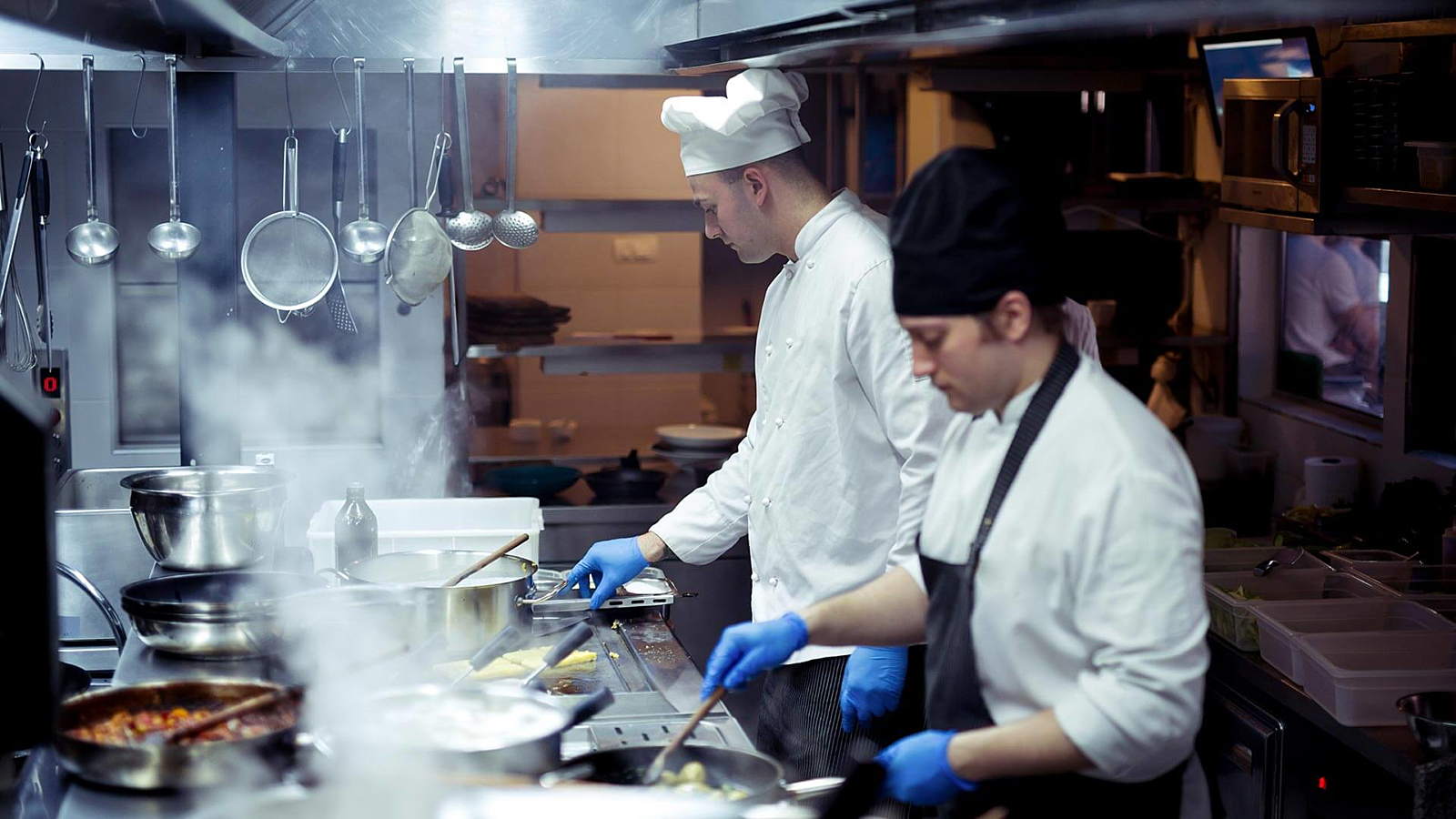
How to Create a Restaurant Culture Built on Quality Service
How are you improving your restaurant culture with quality service? Train your staff to focus more on restaurant service from start to finish.

Allie Van DuyneAuthor
It doesn’t matter what your market segment is: Service is critical to good hospitality.
A pleasant smile, a congenial and caring attitude, and a genuine concern for your customers’ experience is critical for a positive restaurant culture.
How does a restaurant create this culture, and increase restaurant service quality?
It starts with training. Then reinforcing, observing, and retraining.
It is the responsibility of the manager or owner to ensure that they are creating a warm and inviting restaurant culture, and that every employee starts their shift with the guest in mind.
Remind your servers, waitstaff, and even busboys how they impact a customer’s experience at your restaurant, directly influencing their perception and their willingness to come back.
Let’s walk through a typical customer’s time at your restaurant, be it a full service restaurant or a quick service restaurant, and look at how you can offer quality service at every step of the way.
Guide to the Restaurant Guest
Learn how to navigate changing guest expectations during and after the COVID-19 health crisis.

When the guest walks in…
Service starts as soon as the first customer contact is made. Usually, this is at a host stand in a full serve restaurant or a cashier in a quick service restaurant.
Your customer has just left work or home, and travelled some distance to eat at your restaurant. Instead of rushing them, you should make sure they are greeted warmly, with a smile and good eye contact. This may sound easy enough, but surprisingly, this very basic step is often ignored. The “warm welcome” needs to be taught, observed, reinforced, and retrained to hosts, hostesses and cashiers.
How many times have you gone somewhere and not been welcomed? The person behind the counter or host stand might smile, or might not. They sometimes will just say “Table for two?” without even seeming to care or without even making eye contact. This same person will then turn to the seater and say the table number. Not a good start. Now compare this to the person who smiles and welcomes you, looking in your eyes, and then says, “So-and-So will bring you to table, enjoy your meal!”
The same exact thing holds true in a quick casual or quick serve restaurant. There’s a big difference between “Next,” and “Hi, welcome to [Your Restaurant], how can I help you today?” There is a big difference between a lifeless look that suggests they can’t wait to get out of there and a glowing smile that makes you smile in return.
When the guest sits down…
Quality service often comes down to the servers or waitstaff.
Regardless of the world they left behind when they came to work or the chaos of the restaurant itself, servers need to be calm, cool, and welcoming to restaurant customers. They need to realize that the customer chose to eat at their restaurant, when they could have chosen many others.
Servers should greet customers with a smile, a welcome, and a short introduction, and then sincerely offer their assistance. During the ordering process, they should know the menu like the back of their hand, and be able to describe the dishes appropriately. It also helps to offer personal recommendations or to reinforce orders by saying that many guests enjoy it.
Bussers, on the other hand, need to be as quiet as possible regardless of the venue. Nothing is more aggravating than hearing a busser banging dishes when you are trying to eat. This almost seems to scream, “I don’t care about you, I just want to get this darn table clean!”
The guest is continually noticing the servers, bussers, runners, and managers. They see when they are more attentive to their parties or when they are more attentive to their conversations with other servers at the wait stand. If any servers see a guest in need, they should offer to help. The entire team needs to show that they care about the guest and the restaurant guest experience.
When the guest leaves…
Your restaurant’s quality service isn’t complete after the check is paid. In fact, your staff should be providing quality service right until your customer walks out the door.
Think of the difference between leaving a restaurant unobserved and leaving one where every single server, host, or busser thanked you for coming and said, “We hope to see you again!” Does your staff do this at your restaurant, or do they just look ahead awkwardly, as if the customer doesn’t even exist? Which would make you feel better?
Lastly, which of these sounds better? “I will be right back with your change,” or, “Do you need any change with that?” These are small details, but they make a big difference. What if the customer left a $100 bill for a $42 check? Wouldn’t the first answer sound way better than the second? Might the second be a bit offensive or assuming on the part of the server? Why not avoid taking the chance and just stick with the first option, said with a smile and with eye contact, always. The guest can always offer the server to keep the change, at which time a smile, a thank you, and an invite to come again are all very appropriate.
How Are You Improving Your Restaurant Culture?
As an owner, it’s hard to monitor quality service within your restaurant, especially if you’re not there all the time, and checking in from the cloud. However, it’s important to make time to improve your restaurant culture. At least once a quarter, you should either pretend to be a customer at your restaurant to observe its workings, or send in a friend to do the same and report back to you.
Every pre-shift should have one component that reinforces the importance of the guest and the mission of exceeding their expectations. Frowns need to be replaced with smiles. Customers need to be treated kindly, warmly and with respect.
With a focus on quality service, your restaurant will cater to more repeat customers and train more professional staff, increasing your reputation and your sales.
Related Restaurant Operation Resources
Is this article helpful?
DISCLAIMER: This information is provided for general informational purposes only, and publication does not constitute an endorsement. Toast does not warrant the accuracy or completeness of any information, text, graphics, links, or other items contained within this content. Toast does not guarantee you will achieve any specific results if you follow any advice herein. It may be advisable for you to consult with a professional such as a lawyer, accountant, or business advisor for advice specific to your situation.
Read More
Subscribe to On the Line
Sign up to get industry intel, advice, tools, and honest takes from real people tackling their restaurants’ greatest challenges.


